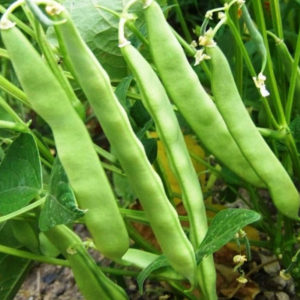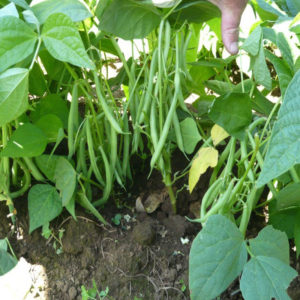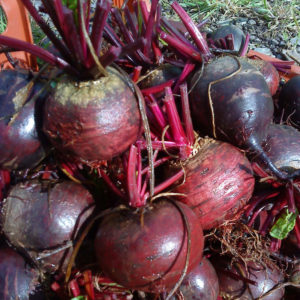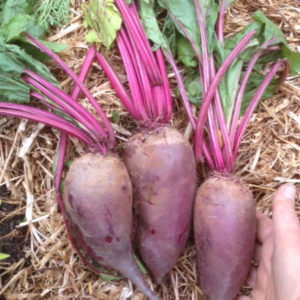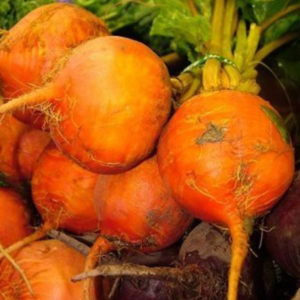-
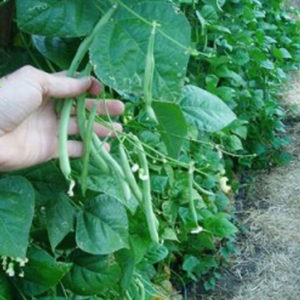 Phaseolus vulgaris Reliable round stringless tender dark green bean up to 15cm long. Tall climber 2 metres and more producing lots of white flowers then the lovely slender beans. Considered the best tasting bean Blue Lake is certainly one of the best producers over a long period of time. Copes well with heat and can be grown right through Spring to the early days of Autumn. Needs staking or a strong trellis.
Phaseolus vulgaris Reliable round stringless tender dark green bean up to 15cm long. Tall climber 2 metres and more producing lots of white flowers then the lovely slender beans. Considered the best tasting bean Blue Lake is certainly one of the best producers over a long period of time. Copes well with heat and can be grown right through Spring to the early days of Autumn. Needs staking or a strong trellis. -
 Phaseolus vulgaris We’d been after this climber for a long time and are very grateful. Up to 2 metres needing staking or strong trellis the rich green leaf contrasts beautifully with the streaks of red/pink/cream that makes this bean productive, ornamental and delicious. Unlike other beans pick when swollen with seeds then dry or better still steam while green and tender, a very sort after delicacy.
Phaseolus vulgaris We’d been after this climber for a long time and are very grateful. Up to 2 metres needing staking or strong trellis the rich green leaf contrasts beautifully with the streaks of red/pink/cream that makes this bean productive, ornamental and delicious. Unlike other beans pick when swollen with seeds then dry or better still steam while green and tender, a very sort after delicacy. -
Out of stock
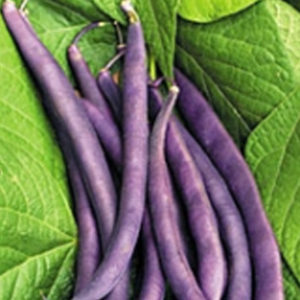 Phaseolus vulgaris Deep purple pods are oval shape and grow to 15cm on dwarf plants. The purple pods against the luscious green growth make for a beautiful as well as prolific bean plant. Can be eaten raw and when cooked will turn green.
Phaseolus vulgaris Deep purple pods are oval shape and grow to 15cm on dwarf plants. The purple pods against the luscious green growth make for a beautiful as well as prolific bean plant. Can be eaten raw and when cooked will turn green. -
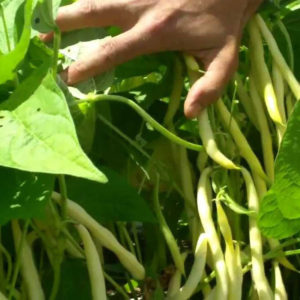 Phaseolus vulgaris Vibrant yellow podded dwarf bush bean about 15cm long these wonderful butter beans origins seem to come from South Carolina around the 1950’s. The strain is disease resistant, a vigorous grower with a good strong harvest. Best picked early while quite slender and they’ll be plenty to come. These are fun to seed save from as the bean is deep black.
Phaseolus vulgaris Vibrant yellow podded dwarf bush bean about 15cm long these wonderful butter beans origins seem to come from South Carolina around the 1950’s. The strain is disease resistant, a vigorous grower with a good strong harvest. Best picked early while quite slender and they’ll be plenty to come. These are fun to seed save from as the bean is deep black. -
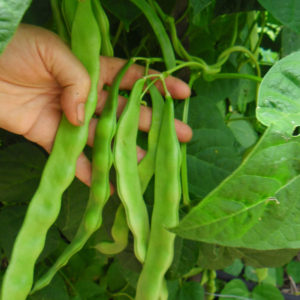
Phaseolus vulgaris This bean was a gift from a gentleman in Pearcedale who gave us a handful literally. It took the next year to grow out and realize what a lovely gift it was. Tall climber with pink beautiful flowers, then long 30cm truly flat pods very tender even at the early stages of the seed swelling. Great cooked with onions, garlic, tomatoes, bay leaves seasoning and the beans thrown in whole and cooked for the last 10 minutes.
-
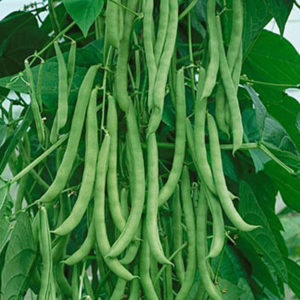 Phaseolus vulgaris Once the most popular bean in the south of America this bean has been first mentioned in 1864 as Texas Pole. A green climber it can grow very tall producing pods up to 20cm long. Fleshy, curved and broad-oval pods with seeds filling to the tip and edge but not crowded. Very reliable, flavoursome, abundant and early maturing. Can be picked fresh or allow pods to dry and save beans.
Phaseolus vulgaris Once the most popular bean in the south of America this bean has been first mentioned in 1864 as Texas Pole. A green climber it can grow very tall producing pods up to 20cm long. Fleshy, curved and broad-oval pods with seeds filling to the tip and edge but not crowded. Very reliable, flavoursome, abundant and early maturing. Can be picked fresh or allow pods to dry and save beans. -
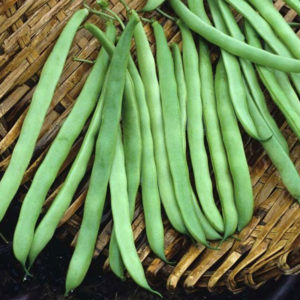 Phaseolus vulgaris This lovely ‘politically incorrect’ bean derives its name for its ease of growing and one of the first stringless beans making preparation much easier…for the housewife nearly 200yrs ago! Tender, productive fleshy broad green climber up to 2 metres. Rare now and needing reviving as its flavour compares well with today's good green bean.
Phaseolus vulgaris This lovely ‘politically incorrect’ bean derives its name for its ease of growing and one of the first stringless beans making preparation much easier…for the housewife nearly 200yrs ago! Tender, productive fleshy broad green climber up to 2 metres. Rare now and needing reviving as its flavour compares well with today's good green bean. -
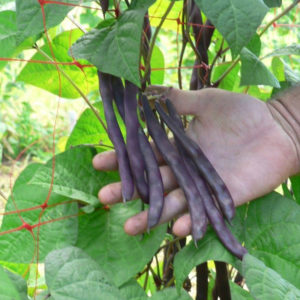 Phaseolus vulgaris Produces pink flowers, then deep purple tender oval stringless pods up to 18cm long. Very abundant over a long period. Needs staking or a strong trellis growing an impressive 2 metres or more. Always reliable and worth picking when pods are young. Can be eaten raw and when cooked they will turn green.
Phaseolus vulgaris Produces pink flowers, then deep purple tender oval stringless pods up to 18cm long. Very abundant over a long period. Needs staking or a strong trellis growing an impressive 2 metres or more. Always reliable and worth picking when pods are young. Can be eaten raw and when cooked they will turn green. -
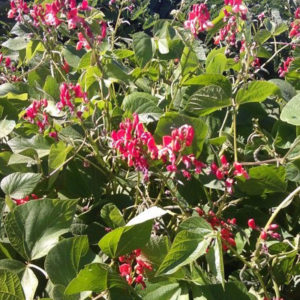
Phaseolus coccineus Originally from the mountains of Central America, Scarlet Runners are often grown as an ornamental as the flowers with contrasting green leaves are dramatic & beautiful. Planted in spring the climber can produce flowers all summer till autumn when the beans begin to set in the cooler weather. Beans when picked young are long flat tender and very tasty. Or let beans dry on plant and are considered tasty.

